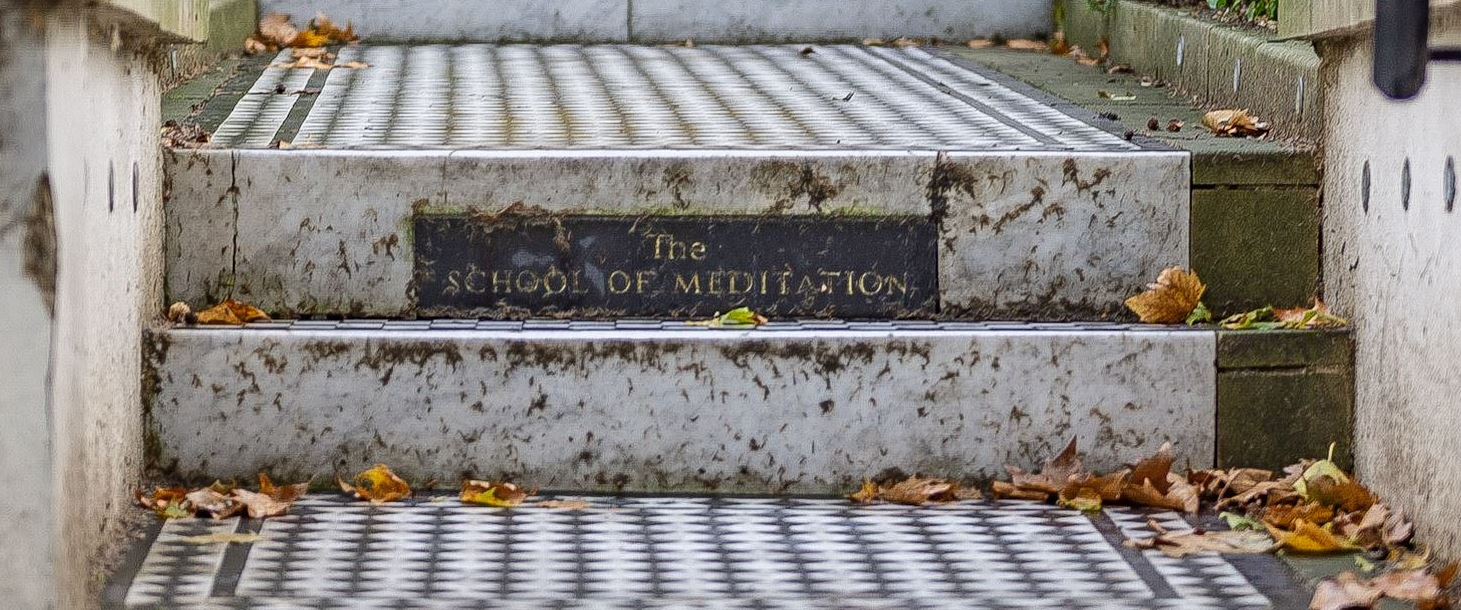History
For six decades and counting, the School of Meditation has been the home of meditation tuition and support to thousands of people.
The School was founded on the principle of making meditation available to people of all backgrounds, creeds and faiths. The technique it teaches enables people to access deeper levels of stillness, rest and peace: helping them to cope with the challenges of everyday life, while also discovering more about their own true nature.
Beginnings – the 1950s
In the 1950s, a group of thinkers – keen to discover how people might live to their full potential – came together with a shared interest in accessing a deeper level of knowledge and awareness than was experienced in ordinary life. At that time, little was known about meditation in the West.
These thinkers were students of the philosophers P.D. Ouspensky and G.I. Gurdjieff; they included the artist and politician Andrew MacLaren; and Dr Francis Roles. They had been exploring various approaches and traditions but had not yet found the key to human potential.
In 1959 an Indian teacher, the Maharishi Mahesh Yogi, visited Britain as part of a speaking tour of the world. Meeting the Maharishi, the School of Meditation’s pioneers realised that what they were looking for, to connect mind and heart, was the meditation that he taught.
Development - the 1960s
In 1961, at the invitation of the Maharishi, Dr Roles visited Rishikesh in India where he was introduced to Shri Shantananda Saraswati, whose formal title was Shankaracharya of Jyotir Math, Northern India. The title denoted the Shankaracharya as the head of a philosophical and spiritual tradition with deep roots in South Asia.
The Shankaracharya outlined the philosophy of Advaita Vedanta and Dr Roles realised that it provided both the philosophical underpinning and the practical application that he and his colleagues had been searching for.
In addition to the philosophical and intellectual approaches which Dr Roles and his colleagues had already engaged with, the Shankaracharya explained the efficacy of a regular meditation practice in bringing peace of mind to the individual, and to wider society.
That same year, the School of Meditation opened in London, and the fledgling organisation undertook to make meditation available to the public and offer care and guidance to all who attended.
In 1967, with ideas about meditation having found a receptive new audience in the West, and the Maharishi passing the teaching to The Beatles, the School moved to its current headquarters in West London.
India
The popularity of meditation continued, as did Dr Roles’ visits to India to meet the Shankaracharya. Dr Roles took with him questions from School members and received guidance on the method and its associated philosophy. In 1967 the Principal of the School of Meditation, Bill Whiting, also made the first of several trips to hold audiences with the Shankaracharaya.
These audiences enabled the School to deepen its understanding of Advaita Vedanta. The Shankaracharya’s answers to a broad range of questions have been published in the form of two books, Good Company and Good Company II. His answers are also the basis for the material studied at the School’s weekly groups.
Philosophy
Advaita Vedanta – the ancient philosophy that underpins the School’s approach - emerged from sacred Indian texts including the Vedas, Upanishads and the Bhagavad Gita. Hugely influential in Indian culture, Advaita Vedanta sees the true nature of humans as unified with a greater consciousness, meaning we are fundamentally one with the world around us.
Meditation enables people to access deeper levels of peace, helping them to live more harmoniously while gently discovering more about their true nature.
Despite being rooted in this ancient tradition, the philosophy and practice given to the School are meant for people living busy, Western lifestyles. The Shankaracharya advised the School that to develop one’s inner being did not mean withdrawal from the world, and he encouraged School members to lead active, balanced lives.
As such, the School teaches a simple form of meditation that provides true rest and refreshment with a philosophy that helps people in understanding themselves and enrich their lives.
The School’s guide and mentor, Shri Shantananda Saraswati, died in 1997, but during a final audience with the School’s then Principal, he stated that both the practice and the teaching were complete: the School had everything it needed to provide meditation guidance to those seeking it.
By 2011, with the School marking its 50th anniversary, it had introduced 15,332 people to meditation.
Relevance today, and always
With the accelerating pace of life, and widespread understanding of its many health benefits, meditation has gained new popularity.
The School of Meditation continues to teach the same timeless method and philosophy as it did sixty years ago, opening its doors to each and every person who wishes to learn.
It has expanded its work to enable more people to access meditation, via free classes and short courses online, and branches have been established around Britain, as well as overseas. Click here for contact details.
The School’s aim today is the same as when it was first founded in 1961: to bring stillness, rest and peace to all who seek them.
